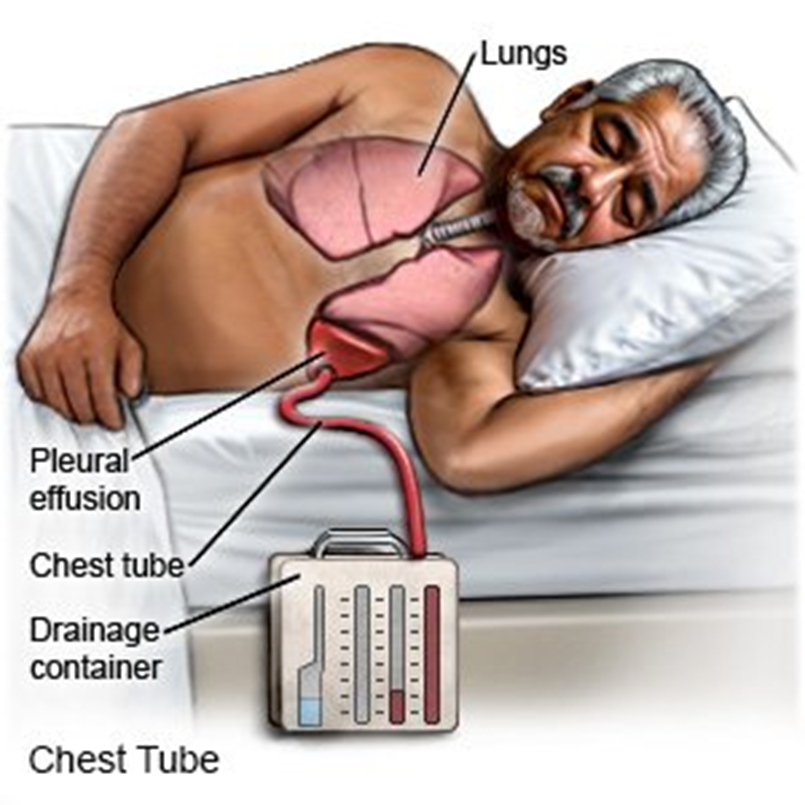A client is on a ventilator. Alarms are sounding, indicating an increase in peak airway pressure. The nurse assesses first for what?
Malfunction of the alarm button.
A cut or slice in the tubing from the ventilator.
Higher than normal endotracheal cuff pressure.
A kink in the ventilator tubing.
The Correct Answer is D
Choice A Reason:
Malfunction of the alarm button is unlikely to be the cause of increased peak airway pressure. The alarm is designed to alert the nurse to a problem with the ventilator or the patient’s airway, not to malfunction itself. Therefore, this is not the first thing the nurse should assess.
Choice B Reason:
A cut or slice in the tubing from the ventilator could cause a loss of pressure or air leak, but it would not typically result in increased peak airway pressure. Instead, it would likely cause a decrease in pressure and potentially trigger a different alarm.
Choice C Reason:
Higher than normal endotracheal cuff pressure can contribute to increased peak airway pressure. However, it is not the most immediate concern compared to a kink in the tubing, which can completely obstruct airflow and rapidly compromise the patient’s ventilation.
Choice D Reason:
A kink in the ventilator tubing is a common and immediate cause of increased peak airway pressure. It obstructs the flow of air, leading to a buildup of pressure in the system. This is the first thing the nurse should assess and correct to ensure the patient is receiving adequate ventilation.

Nursing Test Bank
Naxlex Comprehensive Predictor Exams
Related Questions
Correct Answer is C
Explanation
Choice A Reason:
Weigh the client daily: While monitoring weight is important for clients with Addison’s disease, it is not the primary action to prevent an Addisonian crisis. Daily weight monitoring helps track fluid balance and detect any sudden changes that might indicate complications, but it does not directly address the hormonal imbalance that characterizes Addisonian crisis.
Choice B Reason:
Restrict food intake: Restricting food intake is not recommended for clients with Addison’s disease. Proper nutrition is crucial for maintaining energy levels and overall health. Clients with Addison’s disease need a balanced diet to manage their condition effectively. Restricting food intake could lead to malnutrition and exacerbate symptoms.
Choice C Reason:
Administer oral corticosteroids: This is the correct action. Addison’s disease is characterized by insufficient production of cortisol and aldosterone by the adrenal glands. Administering oral corticosteroids helps replace the deficient hormones and manage the symptoms of Addison’s disease. During an Addisonian crisis, immediate administration of corticosteroids is critical to prevent severe complications such as shock, coma, or even death.
Choice D Reason:
Provide a low carbohydrate diet: A low carbohydrate diet is not specifically recommended for clients with Addison’s disease. Instead, a balanced diet that includes adequate carbohydrates, proteins, and fats is essential. Carbohydrates are important for maintaining energy levels, especially since clients with Addison’s disease may experience fatigue and weakness. Restricting carbohydrates could lead to low blood sugar levels, which can be dangerous for these clients.
Correct Answer is C
Explanation
Choice A Reason:
Administering levetiracetam intravenously is not the first intervention. While levetiracetam is an antiepileptic drug used to control seizures, it is not the first-line treatment for an ongoing seizure, especially one lasting as long as 15 minutes. The priority in this situation is to stop the seizure activity immediately to prevent further complications, such as neuronal damage or status epilepticus. Levetiracetam may be used later for maintenance therapy, but it is not the initial emergency intervention.
Choice B Reason:
Obtaining a STAT electroencephalogram (EEG) is important for diagnosing and understanding the type of seizure activity, but it is not the first intervention. The immediate priority is to stop the seizure. An EEG can be performed after the seizure has been controlled to assess brain activity and guide further treatment. Delaying the administration of an anticonvulsant to perform an EEG could result in prolonged seizure activity and increased risk of complications.
Choice C Reason:
Administering lorazepam intravenously is the most appropriate first intervention. Lorazepam is a benzodiazepine that acts quickly to stop seizure activity. It is the drug of choice for treating status epilepticus and prolonged seizures because of its rapid onset and effectiveness. Administering lorazepam helps to quickly terminate the seizure, reducing the risk of complications and stabilizing the patient for further evaluation and treatment.
Choice D Reason:
Obtaining a STAT 12-lead electrocardiogram (ECG) is not the first intervention. While an ECG can provide valuable information about the patient’s cardiac status, it does not address the immediate need to stop the seizure. The priority is to administer an anticonvulsant to terminate the seizure. Once the seizure is controlled, an ECG can be performed to assess any potential cardiac issues, especially if the patient has a history of cardiac problems or if the seizure was triggered by a cardiac event.
Whether you are a student looking to ace your exams or a practicing nurse seeking to enhance your expertise , our nursing education contents will empower you with the confidence and competence to make a difference in the lives of patients and become a respected leader in the healthcare field.
Visit Naxlex, invest in your future and unlock endless possibilities with our unparalleled nursing education contents today
Report Wrong Answer on the Current Question
Do you disagree with the answer? If yes, what is your expected answer? Explain.
Kindly be descriptive with the issue you are facing.
